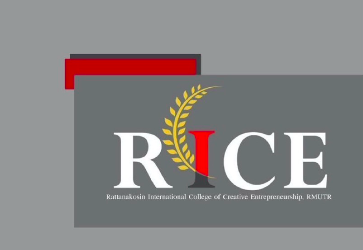For Authors

Arrangement and Style of Manuscript
1. Paper and page setup: Paper size: Standard A4
Top margin: 1 inch Bottom margin: 1 inch
Left margin: 1.25 inches Right margin: 1 inch
Header: 0.5 inch Footer: 0.5 inch
2. Manuscripts of original articles, for both print and online versions, should be submitted in a WORD file of the A4-sized paper, using the Times New Roman (12-point font). Symbols used should be of a similar size and typed on the corresponding lines of text used in each section. Manuscripts of the original article should contain the following sections: title, author’s name, author’s workplace, abstract and keywords, the main text/ body text, acknowledgements, references, tables, figures, captions/legends and illustrations. Each page should be clearly numbered in the bottom center of each sheet. Authors should carefully edit and proofread their manuscripts before submission.
2.1 The title: The title of the article must not exceed 2 lines. A title itself has to be informative and indicates the main topic in the article. The title should be set in the center of the page, using upper and lower case letters of Times New Roman 12 points and printed bold. If there is any symbol, its size must be the same as the text in that line.
2.2 Author’s name: The author’s name and last name are in Times New Roman 11 points in upper and lower case letters in the center of the page below the title of the article. In the case of multi-authorship, identify each author by superscript numbers at the end of the author’s last name.
2.3 Author’s workplace: The workplace (address of the institution) of the author and/or the group of the authors, are in regular Times New Roman 10 points in upper and lower case letters in the center of the page. In case of multi-authorship, please superscript numbers in front of the entire author’s name. The e-mail address and telephone number of the corresponding author should also be included here.
2.4 Abstract and Keywords: The abstract and key words are in Times New Roman 11 points. They must be single-spaced under the author’s workplace and separated from the bottom line of the author’s workplace.
2.4.1 Abstract should be informative and state what was done, obtained and concluded. It should be accurate, self-contained, concise and specific, coherent and readable, and reflect only what appears in the original paper. An abstract should contain the following basic components: (1) purpose/motivation/problem statement, (2) methods/design/procedure/approach, (3) results/findings/products, (4) conclusion/applications/research limitations/implications (if applicable), practical implications (if applicable), pedagogic or social implications (if applicable), and (5) originality/value. The length of the abstract should be about 150 words and not exceed 200 words. Type the word “Abstract,” using Times New Roman 11 points and print bold, left-hand justified. The abstract should be written in one single-spaced paragraph under the heading.
2.4.2 Keywords: Type the word “Keywords,” using Times New Roman 11 points and in italics, left-hand justified, separated by a colon (:) followed by keywords written in English not over five words, and separate words by a comma (,).
2.5 The main text: The main text of the manuscript must be typed in WORD using Times New Roman 12 points, under an abstract and keywords with single-spaced line and separated from the above section. The main text of your paper should be divided into eight sections (see below), each with a separate heading. Headings are in bold letters, left-hand justified in the column. The first line of each paragraph should indent 0.5 inch from the left margin (of the page/of the right-hand column). Scientific names are normally shown in italics, and symbols must be the same size as the text in that line. The body of the text includes: (1) Introduction, (2) Research Objectives, (3) Research Methodology, (4) Results and Discussion, (5) Conclusion, (6) Acknowledgement, (7) The Author, and (8) References.
2.6 In-text citations: Authors are to give references to all the information obtained from books, papers in journals, websites, or other sources. The Author-Date System should be used to cite references within the paper by using the author’s last name and date (year), separated by a comma in parentheses; for example, name(s), year.
2.7 Tables and Figures:
2.7.1 Tables: The large-sized table format should not be split into two columns but small-sized table can be fit into the column. Each table must be titled, numbered consecutively and complete with heading (title with a description that goes above the table). The word “Tables,” including number should be typed using Times New Roman 11 points and bold, left-hand justified, and follow by regular 11 points Times New Roman for the heading.
2.7.2 Figures: Line-drawn graph or Figure (in black) is accepted. Also, in the case of photographs, glossy photographic prints, 3.5 x 5.0-inchs, should be submitted concurrently. Similar to tables, large-sized figure format should not be split into two columns but small-sized figure can be fit into the column. Each figure must be numbered consecutively and complete with caption above the figure. The word “Figure”, including number should be typed using Times New Roman 11 points and bold, left-hand justified, and followed by regular 11 points Times New Roman for the caption.
2.8 Symbols and units: Every used symbol must be defined in the text and written in the simplest possible way.
2.9 Numbering pages: Manuscript pages must be consecutively numbered throughout the paper except the first page in the bottom center of the page, using bold Times New Roman 12 points.
2.10 Reference lists: The final page contains a list of resources cited in the paper. The style of citations used in RJCM should conform to the American Psychological Association (APA). It is the author’s responsibility to ensure the accuracy of all references cited in the paper. References should be listed in alphabetical order using regular Times New Roman 11 points.
